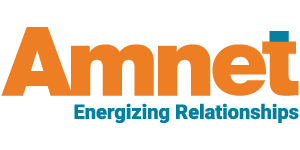[Approximate Reading Time : 4 mins]
Students and faculty around the world generally found it difficult to adapt to online learning during the pandemic. But institutions that were already invested in smart education mediums were able to cope with the disruption. Yet the real difficulty was for people with disabilities. Their requirements were not a common topic of discussion then, but now the world is starting to empathize and change.
Impact of Digital Accessibility in Education
Accessibility in education does not pertain to the content that is taught or shared. It is about providing an equally enriching experience and options to exhibit knowledge to all students. Inclusivity is important to engage people with varying abilities and different cultures and languages. It is easier to make an impact with digital accessibility in education, as the world revolves around smart devices. When curriculums are made accessible, students can make use of their time to learn instead of finding resources that enable them to learn. In this case, teachers need not focus on providing alternatives that fit the requirement of each student.
Advantages of Accessible Education
A simple auto-caption option for video calls made meetings easier for many. Imagine the impact if every aspect of education were made accessible! Accessible education helps people with permanent disabilities, temporary disabilities, and situational disabilities while enhancing usability for people without disabilities. Educators can adapt to digital formats and still use their teaching methods. Content options that are uncompromised in quality will be made available to all.
Serving the Disability Spectrum
Following a universal design, evaluating the course, getting feedback and implementing changes, and regular updates and upgrades are necessary to have a stable accessible education. Conforming to laws that govern accessibility is appreciable. According to the Web Content Accessibility Guidelines (WCAG), digitally accessible learning content needs to be perceivable, operable, understandable, and robust.
Vision: People with vision impairments use screen readers, zoom option, alternate text, and braille outputs. Avoid using color to indicate information. Check screen reader compatibility and color contrast of text and the background.
Hearing: Captions and transcripts for multimedia content help people with difficulty in hearing.
Movement: Enable easy navigation with keyboard, voice commands, and gestures. List menu on web pages, text-to-speech feature, and appropriately placed clickable buttons are ideal.
Cognition: Clear structure, plain language, and easy-to-follow instructions help people with dyslexia, ADHD, and other cognitive differences. Avoid videos with continuous movement, flashing, and sudden noises.
Growth of Accessible Education
Technology is coming up with better tools, software, and programs that are revolutionizing accessibility in education. Some effort from educational institutions and expertise from educational publishers are required to establish digitally accessible education as a basic necessity.
Amnet’s Accessibility Services have made the lives of many consumers easier through accessible websites and content. Be it conforming to accessibility laws or upgrading to the next version of the WCAG, partner with us for a hassle-free expert service. Read on to know how you can make a difference: https://accessibility.amnet.com/.
Sources:
1. https://aeldata.com/digital-accessibility-important-in-higher-education/.
2. https://www.deque.com/blog/digital-accessibility-for-educators-why-students-with-disabilities-need-equal-access/.
3. https://inclusivedocs.com/digital-accessibility-in-education/.


